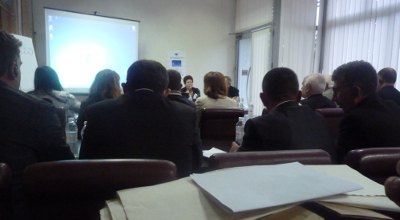 Today is the day after. And like Cinderella I am back in my sloppy house clothes, sitting here in the morning, in front of the computer, thinking: I should tell someone! After the excitement and rushing around, we slept late today – the long peaceful sleep of the justly satisfied – but this also means that my head is full of fluff, so I can’t think where to begin. Well, begin at the beginning. What am I talking about?
Today is the day after. And like Cinderella I am back in my sloppy house clothes, sitting here in the morning, in front of the computer, thinking: I should tell someone! After the excitement and rushing around, we slept late today – the long peaceful sleep of the justly satisfied – but this also means that my head is full of fluff, so I can’t think where to begin. Well, begin at the beginning. What am I talking about?
With Alfred, as well as Mark Lamthi, Kelmend Selimaj, Fatjon Ismalaj and Sami Hysaj, I spent the last three days sitting in Vllaznimi Hotel in Bajram Curri, attending the “ECRAN Inception Event and Situation Analysis Workshop on the process of elaborating a ‘Participatory Management Plan’ for the National Park of the Alps.” ‘What?’ I hear you saying. ‘What’s THAT? That’s IT? What’s all the excitement about?‘ Well, stay with me, and I will explain.
First of all, as some of you know, the law making Theth a National Park was signed in 1966. Valbona has been a National Park, and the upper half of Gashi Valley a Strictly Protected Area, since a law passed in 1996. In the intervening 50 or 20 years, however, none of these recognized national treasures have ever had a staff, nor a budget, nor any kind of management. The National Parks are simply lines on maps, “sitting on shelves” as Sissi Samec said.
But if they were managed, what would that management look like? Well, in some ways, as I understand it, a protected area functions as its own little state. It is created with the understanding that there is something so special about a particular area, that its interests justify it being ‘managed’ somewhat independently of the rest of the surrounding countryside. A National Park would usually have clearly posted boundaries (so you know when you’re in it). It would have a set of rules, for example regarding activities which can (and cannot) take place within the park, for how things should look, not just now, but 20, 50, 100 years from now. All these rules would be made in order to make the Park safe, its nature, its culture, its character, because it is recognized that this area is a treasure, not only for the people who live there, and not only for all Albanians, but for the whole world, for all foreseeable time to come. And of course, it would need to have a staff, dedicated to ensuring that it is operating in harmony, for the benefit of all. And of course, all this costs money, so it would have a budget, too. And how ALL of this is to be done must be written up in the beginning, in a clear and thoughtful Management Plan, which sets out every possible aspect of organization.
This is exactly what none of the protected areas in Albania have ever had.
Two years ago, we heard a rumor that a Plan was being written for Valbona. Of course this filled us with a mixture of excitement and fear. Because we live here. The confusion, inefficiency and corruption of previous Albanian government was enough to make us worry very much what additional rules and regulations might look like. Would the new Plan recognize that there were people living inside the park? What about the fact that 80% of privately owned land is in some kind of dispute and has no legal documentation? How would it affect tourism, our only real source of income? Would the new Plan protect all of the inhabitants of the Park, or would it add a new level of difficulty for everyone? Alfred and I set out to try to answer some of the questions, but despite numerous trips to Tirana, we were never able to get anyone to give us any real details, nor did anyone show any real interest in involving the local people in the process.
Here I should make a point clear. Of course there is a spectrum of opinion among local people, and of course this spectrum varies. Some people are worried that their children will find it difficult to live here in the future – will they be able to build a house, when their children have children? Some people recognize that the wellspring of tourism is the nature, that the ‘wildness’ of the area is what people travel here to see, so it is good for us if that is protected. A surprising number of people – pretty much everyone – are concerned for our culture. Will a managed park protect our culture, or harm it? If we are not allowed to graze animals, if the stans and bjeshk are closed off inside ‘strictly protected core zones’ where no one but scientists are allowed to go, how will our culture survive? The land has shaped and formed us, just as we have shaped and formed it as we carved out our little homes – how can either of us survive without the other? Or will the Plan do enough? Will it do what we cannot do for ourselves, like put an end to the hideous rock quarry currently chewing away at our hillsides, right in the entrance to the park? Our beautiful mountains are being destroyed one tractor bite at a time, ground up and trucked away to god-knows-where, to make money for someone not from here. Will it stop the lumber trucks which rumble down the road from Cerem in the middle of the night, filled with our beautiful forests, hacked down and slashed into logs, to make money for someone not from here.
 We are a suspicious people. We find it difficult to trust outsiders. Even me, who has only been lucky enough to live here for 5 years. We are suspicious for very good reasons. Too often, things are done to us, even when they are being done under the guise of being done for us. In some ways, perhaps all of us have come to live here, because at some point someone saw it as a place where we would be left alone in peace. The Plan threatened to change all of that. Were we afraid? We were very afraid.
We are a suspicious people. We find it difficult to trust outsiders. Even me, who has only been lucky enough to live here for 5 years. We are suspicious for very good reasons. Too often, things are done to us, even when they are being done under the guise of being done for us. In some ways, perhaps all of us have come to live here, because at some point someone saw it as a place where we would be left alone in peace. The Plan threatened to change all of that. Were we afraid? We were very afraid.
So this was the situation last June, when a forestry department vehicle pulled up at the door of Rilindja, and a handful of people struggled out. We recognized Blerant Lushaj of the forestry department, another one of our heroes. The others, we didn’t know. They turned out to be a handful of people from the Ministry of the Environment, including Silvamina Alshabani (Yes, another hero!), as well as Sissi Samec from Austria, who was sent to us via the EU, who had contracted her to oversee a new project. Sissi deserves a title even better than hero. Perhaps I will call her our fairy godmother. I can only say that from where I am sitting, she seems to be the best thing that’s happened to Albania in quite some time.
Why were they here? They had come to have a look around I suppose, but also to tell us about a new process that was beginning. It was a lot to take in, out of the blue, and to be honest, I’m not sure how much I understood at the time, but as I’ve come to understand it, it amounts to this: back in 2014, the Ministry of the Environment passed a resolution stating the intention to combine the 18,000 hectares of Theth, Valbona and Gashi and increase their area to include more than 30,000 ha to form a National Park of the Alps. Of course, this means a new Management Plan. In a completely separate EU process (the ‘Environment & Climate Regional Accession Project’), the drafting of this management plan was selected by the EU who had an idea to chose ONE project out of all seven countries in the region currently undergoing the accession process to join the EU (those 7 being Macedonia, Montenegro, Albania, Kosova, Bosnia, Serbia and Turkey). This chosen project would be overseen by a EU contracted Expert, who would ensure that the project was conducted according to EU standards and regulations, which means that this project would be done using a ‘Participatory Approach.’ And this is where it gets exciting.
The EU requires that all Management Plans (and maybe everything, for all I know) are written with the full involvement of everyone who feels like they’ll be affected by it. In other words, if you care about it, you have a right to be part of writing it. Can you imagine how revolutionary this is? Well and good. Did we want to be part of it? Yes of course, we said, happy to help.
To be honest, we expected it to be like every other project that’s ever arrived here. They come, they tell us about a project. They say they want us to take part, and then they go back to wherever they came from and make their plans, and our ‘involvement’ ends up to amounting to sitting still for whatever they’ve decided to do. Thus a few of us are grudgingly subjected to a training on ‘Cheese Making’ which we neither need nor want, instead of the ‘How to Identify Edible Wild Mushrooms’ Training which we dream of, and would actually really appreciate and flock to take part in. Simply because no one ever bothers to ask us what we think we need. So, in short, we didn’t expect much.
Fast forward to the end of June, when I received an email from Sissi (and here her role as fairy god-mother begins to emerge). “I’m very sorry,” wrote Sissi, because she thought it would be impossible for us to attend, but she wanted us to know that the First Meeting of this participatory-process of writing-a-management-plan would be taking place in Kukes, at the beginning of July. “I’m sure it’s far for you to travel, at a completely impractical time” she wrote (4 hours away, with 2 border crossings, at the height of the tourist season, when we’re all terribly, TERRIBLY busy), “but,” she said, “I thought you should know.”
Once again, to be honest, I didn’t really understand what the purpose of the meeting was, but if it was about a Management Plan, I knew we wanted to be there. “Is it a public meeting?” I wrote back. “Can we come if we want to?” Being utterly correct, and as I’ve seen, ever-careful to make sure that the local people (in this case the Ministry) are the actual authors of the destiny, Sissi checked with the Ministry, and confirmed that we were welcome.
So at 4 o’clock in the morning, not only Alfred and I, but Mark Lamthi representing Rrogam and Kelmend Selimaj representing Valbona Qender, piled into a car and began the 4 hour drive to Kukes, in order to arrive in time for the 8 am start of the meeting. We didn’t even really know what it was. We arrived to find Sissi and Silva, as well as Edit from the Minisitry. The entire rest of the participants were from the forestry departments of Kukes (for Valbona and Gashi) and Shkoder (for Theth), including Blerant, of course! Everyone looked vaguely surprised to see us – except for Silva and Sissi, who greeted us with huge hugs.
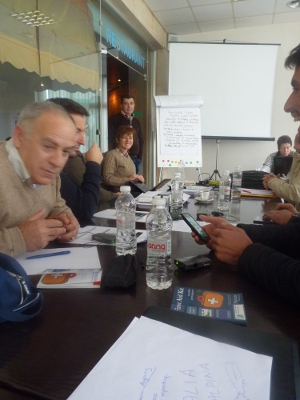 The point of the meeting turned out to be a workshop (meaning a working meeting, with the intent to produce results) to “identify stakeholders.” In other words, to make a big list of everyone who should know about the Park and about needing to write a Management Plan, and who should all be invited to take part in whatever part of the process interested them. Writing about this now seems so simple, but a huge part of the day was devoted to simply drumming into all of us the reality that if the Park, any park, is to be a success, it must involve everyone in creating the reality. Everyone should have a voice. That reality is not to be written by a few privileged – or even a few harried and underpaid – individuals, but that we must all join together in writing our own reality. And that not only is this how it should be, but that – if we were willing to step up to the task – this is how it would be done. So who could we think of?
The point of the meeting turned out to be a workshop (meaning a working meeting, with the intent to produce results) to “identify stakeholders.” In other words, to make a big list of everyone who should know about the Park and about needing to write a Management Plan, and who should all be invited to take part in whatever part of the process interested them. Writing about this now seems so simple, but a huge part of the day was devoted to simply drumming into all of us the reality that if the Park, any park, is to be a success, it must involve everyone in creating the reality. Everyone should have a voice. That reality is not to be written by a few privileged – or even a few harried and underpaid – individuals, but that we must all join together in writing our own reality. And that not only is this how it should be, but that – if we were willing to step up to the task – this is how it would be done. So who could we think of?
Amazing stuff. None of us expected it. Credit must go to Sissi and Silva and Edit for so gracefully walking us through it, for taking an idea we didn’t even know existed, and converting it to a new reality within a few short hours.
Here there is another adventure that happened that day, to do with what we learned along the way about the Management Plans that had been drafted for the existing Protected Areas. But I won’t go into that here. Suffice to say that we were introduced that day to the Management Plans that had been written for the area, old-style. Under-budgeted (which is a generous exaggeration), in unrealistic time frames, the proposed Management Plans were admirable in form, but ridiculous in practicality. Puffed up by encouragement to participate, I believe everyone from that meeting spoke out against the plans. And a week or two later we learned something incredible. The Management Plans, based on our criticisms, had been rejected by the Ministry.
The Management Plans, based on our criticisms, had been rejected by the Ministry.
A simple statement, but you who have read this far, must be able to imagine how revolutionary this was for us. The people had been heard. The people had a voice.
So with all this information, with all this history, perhaps you can understand why it is that I feel that I should – that I must – begin writing this little history, of the process of drafting the future of Valbona. Why I am sitting here in my sloppy clothes, bathed in a glow of happiness.
Four days ago, the second meeting took place. Thanks to the work of the July meeting, we now knew who to invite. And invite them we did. (And notice, already I am writing “we” and not “they”). And we came. From Valbona, from Tirana, from Theth, from Austria and Germany and Brussels we all came, to sit together in one room, and hammer out a vision for the future of these treasures of nature and culture. These treasures which are ours, which are us.
So! I will write more about this. I will write more as it happens. I will write, so that you know, because you – whoever you are who are reading this – should also have a voice.
What you need to know right now is that the point of this second meeting was to make a vision for the future of the Park. To write a short paragraph which will be our reminder in times to come for what we, all of us, hope to achieve, and which will be our gift to the future, to our children, of what we dreamed for them. And it will be an expression of the seriousness with which we all take our responsibilities, responsibilities which we shoulder ourselves, and which we hope our children will be able to live up to. To guard all which is most precious and admirable in our world. For ourselves, and for all time to come.
The Albanian Alps National Park is an inspiring example of the harmonious coexistence of man and nature. As part of a larger cross-border park and the European network of Natura 2000 sites, the Albanian Alps Park is a leading model of conservation, sustainable management and successful educational and recreational use of our unique heritage of biodiversity, culture and landscape.
 O Krepa, Krepa – Nice and Round
O Krepa, Krepa – Nice and Round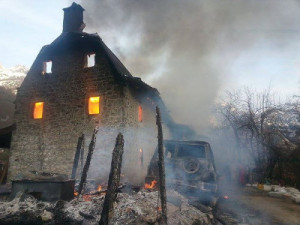
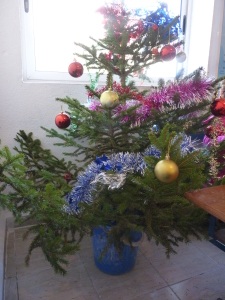
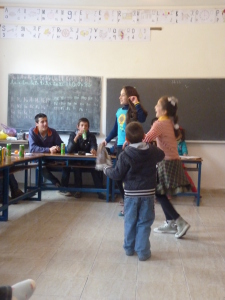 Through the somehow NOT broken front door, the blasted corridor, around the corner, in the room, and . . . . there is EVERYONE, sitting in front of full plates of food, untouched . . . . they are
Through the somehow NOT broken front door, the blasted corridor, around the corner, in the room, and . . . . there is EVERYONE, sitting in front of full plates of food, untouched . . . . they are 


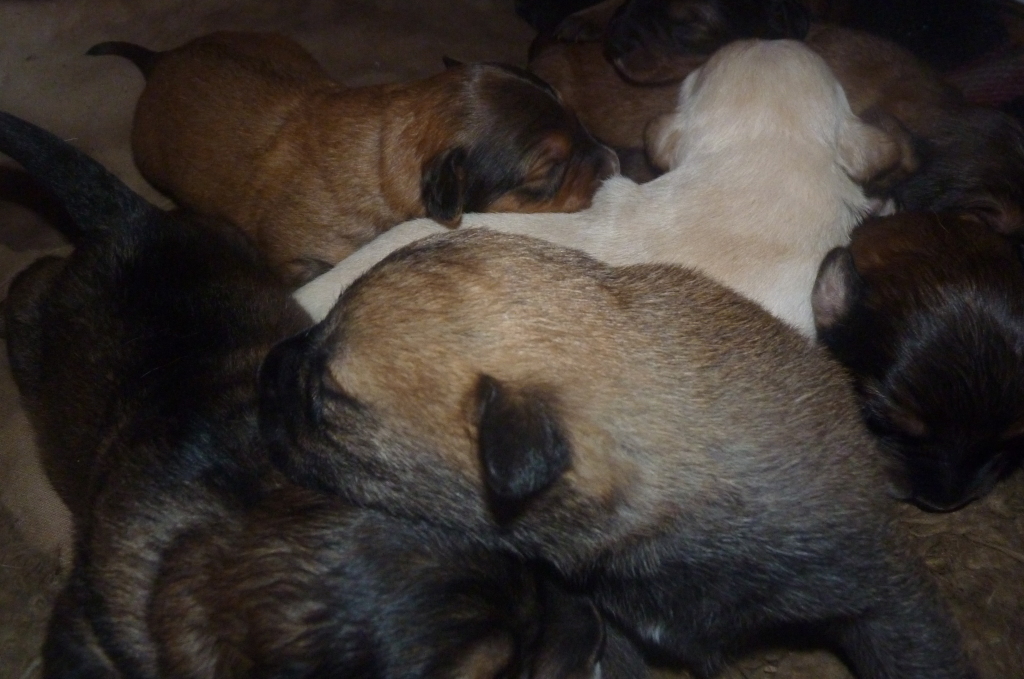
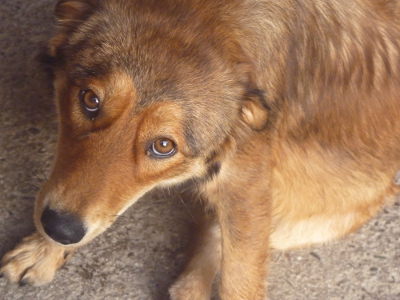 ‘Zana’ showed up here about . . . 2 weeks ago? Some tourists said they’d seen her down in Rrogam earlier that day. She’s super clean and fluffy, and of course friendly, which makes me feel that she must be someone’s pet . . . . especially as the shampooed fluffy-clean thing is NOT normal around here. She might have been lost in Rrogam, or maybe she even walked over from Theth? Alfred says we can’t keep her – you know they don’ do dogs-in-the-house here, and certainly no one really does dogs-in-the-restaurant, which means that for now she’s condemned to hanging around outside taking handouts from the backdoor of the kitchen.
‘Zana’ showed up here about . . . 2 weeks ago? Some tourists said they’d seen her down in Rrogam earlier that day. She’s super clean and fluffy, and of course friendly, which makes me feel that she must be someone’s pet . . . . especially as the shampooed fluffy-clean thing is NOT normal around here. She might have been lost in Rrogam, or maybe she even walked over from Theth? Alfred says we can’t keep her – you know they don’ do dogs-in-the-house here, and certainly no one really does dogs-in-the-restaurant, which means that for now she’s condemned to hanging around outside taking handouts from the backdoor of the kitchen.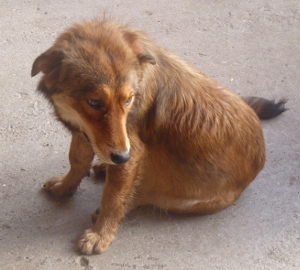
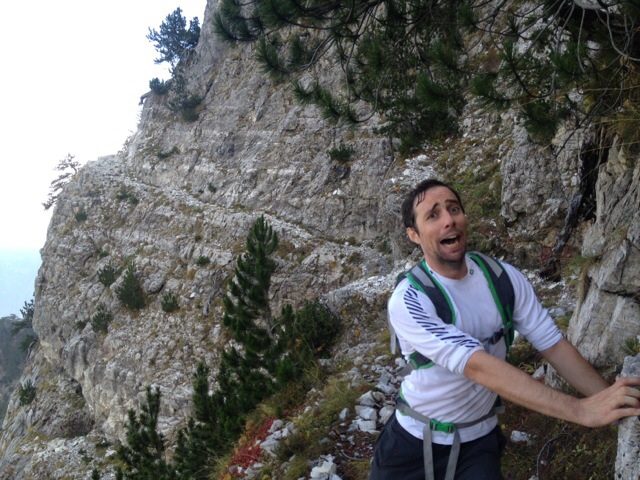 NB: This is of course a staged photo using a professional actor. Hee hee hee . . . . On the other hand, every year there are a couple of people who get lost and wander around in circles. THIS year there were the pair of Poles who decided to ignore our advice about needing a guide to get to Curraj i Eperm, and had to be air-lifted out by a KFOR helicopter. Super nice of KFOR, and of course NOT their job, at all. Which makes this a good place to remind everyone that Valbona National Park still has no staff, and therefore no rescue service, either. Our friend Karin just helpfully sent us a copy of the Norwegian “Fjellvettreglene” – which I assume translates as something like “Good Advice for People who, if they need to be told this, probably shouldn’t be wandering around the mountains on Their Own.”
NB: This is of course a staged photo using a professional actor. Hee hee hee . . . . On the other hand, every year there are a couple of people who get lost and wander around in circles. THIS year there were the pair of Poles who decided to ignore our advice about needing a guide to get to Curraj i Eperm, and had to be air-lifted out by a KFOR helicopter. Super nice of KFOR, and of course NOT their job, at all. Which makes this a good place to remind everyone that Valbona National Park still has no staff, and therefore no rescue service, either. Our friend Karin just helpfully sent us a copy of the Norwegian “Fjellvettreglene” – which I assume translates as something like “Good Advice for People who, if they need to be told this, probably shouldn’t be wandering around the mountains on Their Own.”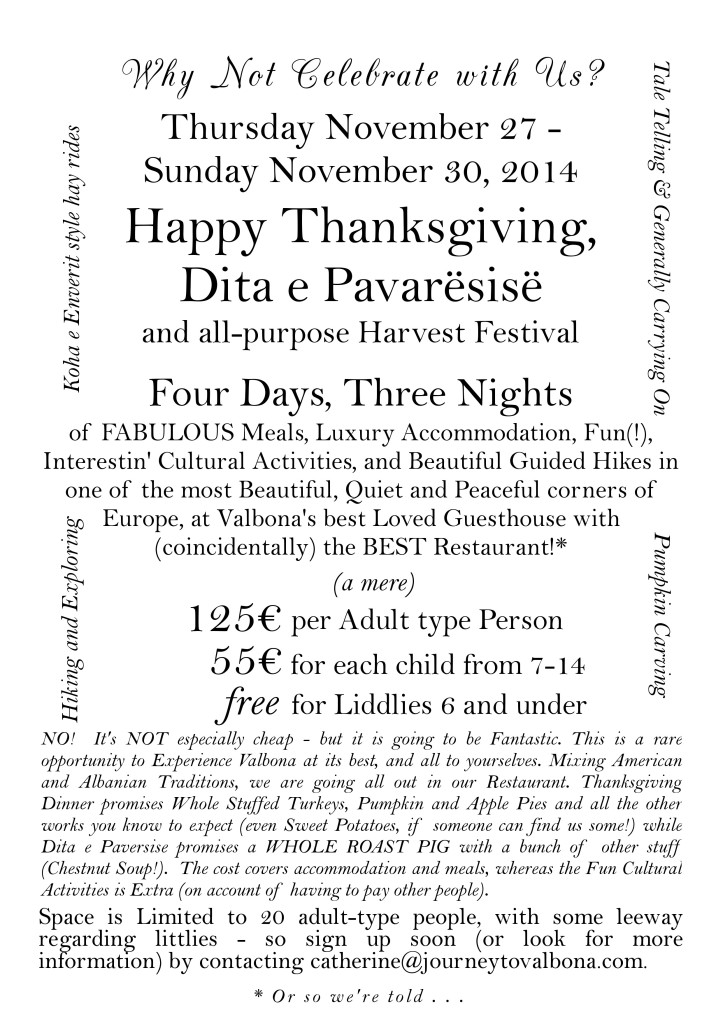




























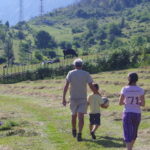 Valbona with Young Children?
Valbona with Young Children? A Very Good Question! Where to Stay to Avoid the Hordes?
A Very Good Question! Where to Stay to Avoid the Hordes? We visited in 2014 . . . .
We visited in 2014 . . . .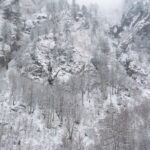
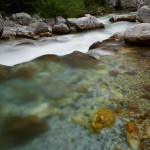 On the Dubious but nonetheless Glorious Triumph of Being [Recognized]
On the Dubious but nonetheless Glorious Triumph of Being [Recognized]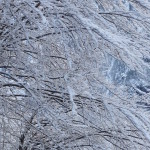 What Passion Feels Like
What Passion Feels Like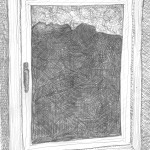 Long Dark Days
Long Dark Days